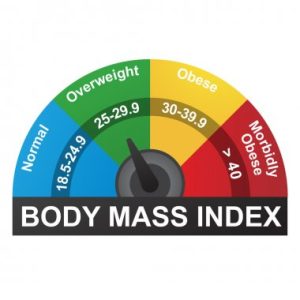
What Is Limitation Of Nutritional Assessment (4 Important Limitations)
What is limitation of nutritional assessment, considering its reliance on self-reported data, potential biases, and the dynamic nature of individual dietary patterns? In the ever-evolving realm of nutrition, unravelling the intricacies of the human diet is akin to navigating a complex maze. Nutritional assessment, a crucial compass in this journey, strives to decode the nutritional status of individuals.
However, as you delve into this scientific odyssey, you will met with the realization that this diagnostic tool, like any other, has its limitations – elusive shadows that dance on the periphery of precision. These limitations, akin to enigmatic whispers in the cacophony of nutritional science, challenge your quest for a comprehensive understanding of dietary well-being. Join as embark on a voyage through the nuanced landscape of nutritional assessment, where the boundaries of knowledge meet the uncharted territories of uncertainty.

What Is Limitation Of Nutritional Assessment
Nutritional assessment, while crucial for evaluating dietary status, encounters limitations that impact its precision and completeness. Nutritional assessment serves as a pivotal tool in evaluating an individual’s dietary intake and health status. However, it is imperative to acknowledge the inherent limitations that might affect the accuracy of the analysis.
Subjective Nature of Dietary Recall
One major constraint lies in the subjective nature of dietary recall. Individuals may unintentionally misreport their food intake, influenced by memory lapses or the desire to present a more favorable dietary profile. This subjectivity introduces an element of uncertainty into the assessment process.
Variability in Nutrient Bioavailability
Nutrient bioavailability, or the body’s ability to absorb and utilize nutrients, introduces another layer of complexity. The assessment may not always reflect the actual nutrient levels available for physiological processes due to variations in absorption rates and individual metabolic factors.
Lack of Standardized Assessment Tools
The absence of universally standardized assessment tools poses a significant challenge. Different methods and tools may yield disparate results, making it challenging to compare nutritional data across studies or populations accurately.
Dynamic Nature of Dietary Patterns
Dietary patterns are inherently dynamic, subject to constant changes influenced by factors like culture, lifestyle, and seasonal variations. Traditional assessment methods might not capture the nuances of these fluctuations, leading to an incomplete understanding of an individual’s long-term nutritional status.
Incomplete Reflection of Nutritional Status
Nutritional assessment often focuses on specific nutrients or dietary components, potentially overlooking the holistic aspect of nutrition. This narrow perspective may fail to capture the interplay of various nutrients and their collective impact on overall health, limiting the comprehensive understanding of an individual’s nutritional status.
Methods of Nutritional Assessment
Nutritional assessment plays a pivotal role in understanding an individual’s overall health and well-being. Utilizing a comprehensive approach, various methods are employed to gather valuable insights into one’s dietary habits, physical condition, and biochemical markers.
Dietary Assessment
Food Frequency Questionnaires
Food Frequency Questionnaires (FFQs) are comprehensive tools used in nutritional research to assess an individual’s dietary habits over a specific period. These questionnaires are designed to capture the frequency and quantity of food and beverage consumption, providing valuable insights into an individual’s overall nutritional intake.
Typically administered through surveys, FFQs require participants to recall and report their consumption of various foods and beverages, often over the past month or year. The questions cover a wide range of food categories, including fruits, vegetables, dairy, meats, and beverages. Participants are asked to indicate how often they consume specific items and, in some cases, estimate portion sizes.
The information gathered through FFQs serves multiple purposes in nutrition research, helping researchers understand patterns of dietary intake, identify associations between certain foods and health outcomes, and evaluate the overall nutritional quality of an individual’s diet. Despite their utility, FFQs are not without limitations, as they rely on self-reported data and may be subject to recall bias.
Researchers often analyze the data collected from FFQs to draw conclusions about the relationships between diet and various health conditions, such as chronic diseases or nutritional deficiencies. The findings from these questionnaires contribute to the growing body of knowledge in the field of nutrition and can inform public health recommendations and interventions aimed at improving dietary habits.
24-Hour Dietary Recall
A 24-hour dietary record is a comprehensive documentation of an individual’s food and beverage intake over the course of a full day. This method involves keeping a detailed log of everything consumed, including meals, snacks, and beverages, along with specific quantities and preparation methods. The goal of a 24-hour dietary record is to provide a holistic view of an individual’s eating habits, aiding in the assessment of nutritional intake and dietary patterns.
Recording information such as portion sizes, cooking methods, and brand names can offer a more accurate representation of dietary habits. This tool is commonly used in nutrition research, clinical settings, and dietary counseling to analyze nutrient intake, identify potential deficiencies or excesses, and tailor personalized dietary recommendations. The information gathered from a 24-hour dietary record allows health professionals to gain insights into an individual’s nutritional status and make informed decisions to support overall health and well-being.
Food Records
Keeping a food record is a valuable practice for individuals seeking to monitor and improve their dietary habits. This record serves as a detailed log of daily food intake, providing insight into nutritional choices, portion sizes, and meal timings. By maintaining a food record, individuals can gain a better understanding of their eating patterns, identify potential areas for improvement, and make informed decisions to achieve specific health and wellness goals.
A food record typically includes information such as the type and quantity of food consumed, as well as any beverages or snacks. Some people also choose to note the time of each meal, along with the circumstances surrounding their eating habits, such as emotional states or environmental factors. This comprehensive documentation enables individuals to recognize trends, such as overeating during stressful periods or neglecting essential food groups.
Beyond personal awareness, a food record can be a useful tool when working with nutritionists or healthcare professionals. It provides them with a comprehensive overview of an individual’s dietary habits, aiding in the development of tailored recommendations and strategies for achieving nutritional balance. Overall, maintaining a food record promotes mindful eating, fosters a greater connection between diet and well-being, and empowers individuals to make informed choices for a healthier lifestyle.
Anthropometric Assessment
Height and Weight Measurements
Height and weight measurements are fundamental metrics used to assess and monitor an individual’s physical well-being. Height, typically measured in centimeters or inches, provides a reflection of an individual’s stature, while weight, measured in kilograms or pounds, indicates the mass or heaviness of the body.
Accurate height and weight measurements are essential in healthcare settings for diagnosis, treatment planning, and monitoring progress. They are also integral in fields like athletics, where specific weight categories may be a factor in competition.
Regularly tracking height and weight is crucial for individuals seeking to maintain a healthy lifestyle. By understanding and managing these metrics, individuals can make informed choices to support overall well-being and reduce the risk of health issues related to weight and stature.
Body Mass Index (BMI)
Body Mass Index (BMI) is a widely used tool to assess an individual’s body weight in relation to their height. It is a numerical value derived from a simple formula: weight in kilograms divided by the square of height in meters. The resulting BMI provides a general indicator of whether a person falls within a healthy weight range, underweight, overweight, or obese category.

Waist-to-Hip Ratio
The waist-to-hip ratio (WHR) is a numerical measurement that compares the circumference of the waist to that of the hips. It is often used as an indicator of body fat distribution and overall health. The formula for calculating WHR involves dividing the waist circumference by the hip circumference.
A lower WHR typically suggests a healthier body composition, as excess abdominal fat, often associated with a higher WHR, has been linked to an increased risk of various health issues, including cardiovascular disease and diabetes. Health experts consider WHR to be a valuable tool in assessing and understanding an individual’s risk for certain health conditions, offering insights into the distribution of body fat and potential associated health risks.

Biochemical Assessment
Blood Tests
Analyzing blood samples for markers like serum albumin and hemoglobin provides valuable information about nutritional status. Blood tests for nutrient metabolism play a crucial role in assessing the body’s nutritional status and overall health. These tests provide valuable insights into how well the body absorbs, transports, and utilizes essential nutrients. Common nutrients examined through blood tests include vitamins, minerals, proteins, and fats. For instance, vitamin levels such as vitamin D, B vitamins, and minerals like iron and calcium can be assessed to identify deficiencies or excesses.
Urinary Biomarkers
Monitoring specific substances in urine offers insights into nutrient metabolism. Urinary biomarkers play a crucial role in assessing nutrient metabolism within the human body. These markers, found in urine samples, provide valuable insights into the absorption, utilization, and excretion of various nutrients. The analysis of urinary biomarkers offers a non-invasive and convenient means to monitor an individual’s nutritional status and metabolic processes.
Hair and Nail Analysis
Hair and nail analyses are valuable tools in assessing nutrient metabolism within the human body. Both hair and nails are composed of keratin, a protein that reflects the body’s nutritional status over an extended period. By examining the composition of these tissues, experts can gain insights into the levels of various minerals and elements crucial for overall health.
Clinical Assessment
Physical Examination
A physical examination plays a crucial role in assessing nutrient metabolism within the human body. During this comprehensive assessment, healthcare professionals systematically evaluate various physical signs and symptoms to gain insights into an individual’s nutritional status and metabolic health.
Medical History
An individual’s medical history plays a crucial role in understanding and addressing nutrient metabolism. This comprehensive record provides insights into various factors that can influence how the body processes and utilizes nutrients. It includes details such as pre-existing medical conditions, genetic predispositions, past surgeries, medication usage, and lifestyle choices.
Employing these diverse methods ensures a holistic understanding of an individual’s nutritional status, supporting informed decision-making for personalized health interventions.
Limitations of Nutritional Assessment
Dietary Assessment
Self-Reporting Bias
Underreporting and Overreporting of Food Intake:
Individuals may consciously or unconsciously provide inaccurate information about their dietary habits, impacting the reliability of data.
Social Desirability Bias
Respondents tend to alter their reported food consumption to align with socially acceptable norms, leading to a distortion of actual dietary patterns.
Inaccuracies in Portion Size Estimation
Estimating portion sizes is prone to errors, as individuals may struggle to recall or accurately gauge the quantities consumed, affecting the precision of dietary assessments.
Lack of Information on Food Preparation Methods
The omission of details regarding cooking methods can result in an incomplete nutritional profile, as variations in preparation significantly impact the nutrient content of foods.
Anthropometric Assessment
Inadequate Sensitivity in Detecting Changes
Anthropometric measurements might lack sensitivity to detect subtle alterations in nutritional status, potentially missing early signs of nutritional deficiencies or excesses.
Variability in Body Composition
Natural fluctuations in hydration levels and body composition can introduce variability, complicating the interpretation of anthropometric data and affecting the accuracy of nutritional assessments.
Influence of Fluid Balance on Measurements
Fluctuations in fluid balance can skew anthropometric measurements, leading to temporary distortions that may not accurately reflect long-term nutritional status.
Biochemical Assessment
Short-Term Fluctuations in Biomarkers
Biomarkers can exhibit short-term variations, making it challenging to capture a precise snapshot of an individual’s nutritional status at a given moment.
Lack of Specificity for Nutrient Deficiencies
Some biomarkers may lack specificity, making it difficult to attribute changes solely to nutritional factors rather than other underlying health conditions.
Genetic Variability in Biomarker Response
Genetic differences among individuals can influence how biomarkers respond to dietary components, complicating the interpretation of results in a diverse population.
Clinical Assessment
Subjectivity in Physical Examination
Physical examination relies on the examiner’s subjective interpretation of signs and symptoms. Factors such as variations in individual anatomy and the examiner’s experience may contribute to discrepancies in assessment.
Influence of Non-Nutritional Factors on Clinical Signs
Various non-nutritional factors, such as medical conditions or medications, can impact clinical signs, making it challenging to attribute observed symptoms solely to nutritional factors. Acute illnesses, infections, or injuries can significantly impact the results of a physical examination. Swelling, fluid retention, or changes in muscle tone due to such conditions may mislead the examiner in evaluating the true nutritional status.
Reliance on Patient Cooperation and Communication
Successful clinical assessment depends on effective communication with patients, and cooperation in providing accurate information, influencing the overall reliability of the nutritional evaluation.
External Factors Affecting Nutritional Assessment
Nutritional assessment is intricately influenced by a myriad of external factors, each playing a pivotal role in shaping an individual’s dietary profile.
Socioeconomic and Cultural Factors
The tapestry of dietary habits spans a rich spectrum across diverse cultures, contributing to the nuanced landscape of nutritional assessments. Exploring culinary traditions, food preferences, and culinary practices reveals the variegated tapestry of nutritional habits across societies.
Economic constraints exert a profound impact on nutritional choices, with financial considerations often steering dietary decisions. Navigating the intricate interplay between income levels and dietary patterns underscores the economic dimension in nutritional assessments.
Health Conditions and Medications
Various medical conditions intricately interlace with nutrient absorption, shaping the body’s ability to glean essential elements from the diet. Unraveling the intricacies of conditions such as malabsorption illuminates the direct correlation between health status and nutritional assessments.
Medications wield a considerable influence on biomarker levels, acting as silent architects shaping the biochemical landscape. Scrutinizing the impact of medications on biomarkers unravels a crucial thread in the fabric of nutritional evaluation.
Age and Developmental Stage
Nutritional needs undergo a dynamic evolution across life stages, creating a kaleidoscope of dietary requisites. Addressing the unique nutritional demands at different life stages encapsulates the essence of holistic nutritional assessments.
Growth and developmental changes introduce a dynamic element into assessments, as physiological transformations sculpt the nutritional landscape. Delving into the impact of growth on nutritional evaluations provides a comprehensive perspective on evolving dietary requirements.
In essence, a thorough nutritional assessment necessitates an adept understanding of these external factors, with cultural, economic, health, and developmental nuances shaping the intricate tapestry of dietary well-being.
Improving Nutritional Assessment
In the dynamic landscape of nutritional assessment, Improving Nutritional Assessment is paramount to ensuring comprehensive well-being. Integration of Multiple Assessment Methods has emerged as a cornerstone, enhancing the precision of evaluations by amalgamating diverse data sources such as anthropometric measurements, dietary recalls, and biochemical analyses. This holistic approach garners a nuanced understanding.
Advancements in Technology, exemplified by the proliferation of Digital Apps for Dietary Tracking, have revolutionized nutritional assessment. These technological tools empower users to monitor their dietary habits with unprecedented ease. The integration of technology not only streamlines the assessment process but also resonates with the contemporary language.
Collaboration between Healthcare Professionals is a pivotal aspect of Improving Nutritional Assessment. By fostering communication among professionals, a comprehensive understanding of an individual’s nutritional status is achieved.
Continuous Education and Training for Assessors reinforces the commitment to excellence in nutritional assessment. This aspect emphasizes the importance of staying abreast of the latest research and methodologies. As assessors continually enhance their skills, the language of “progressive nutritional education” resonates with the ever-evolving nature of nutritional science and assessment practices.

Frequently Asked Questions (FAQ) about What Is Limitation Of Nutritional Assessment
Q: What are the primary limitations of using self-reported dietary intake methods in nutritional assessment?
A: Self-reported methods, such as food diaries or recalls, are subject to memory bias and underreporting, leading to inaccurate assessments of actual nutrient intake.
Q: How do socio-cultural factors contribute to limitations in nutritional assessment?
A: Socio-cultural factors, including food preferences, traditions, and beliefs, can affect the accuracy of dietary assessments by influencing individuals to provide socially desirable responses or by leading to variations in portion sizes.
Q: Are there challenges associated with using body mass index (BMI) as a sole indicator of nutritional status?
A: Yes, BMI does not differentiate between fat and lean body mass, and it may not accurately reflect nutritional status in individuals with varying muscle mass or distribution.
Q: What role do biochemical markers play in nutritional assessment, and what are their limitations?
A: Biochemical markers, while valuable, may be influenced by factors other than diet, such as inflammation or genetics. They provide a snapshot and may not capture long-term dietary patterns.
Q: How do seasonal variations impact the reliability of nutritional assessments?
A: Seasonal variations in food availability and consumption patterns can affect the accuracy of nutritional assessments, particularly in regions with distinct seasonal changes in diet.
Q: Can technological tools eliminate limitations in nutritional assessment?
A: While technology, such as apps and wearable devices, enhances data collection, it may still face challenges like user compliance, data accuracy, and the inability to capture qualitative aspects of dietary habits.
Q: Why is it crucial to consider individual variations in metabolism when interpreting nutritional assessment results?
A: Metabolic differences among individuals mean that two people with similar dietary intake may experience different nutritional outcomes. Assessments must consider these variations for accurate interpretation.
Q: How do acute illnesses and medications impact the accuracy of nutritional assessments?
A: Acute illnesses and certain medications can alter metabolic processes, nutrient absorption, and utilization, introducing variability that may not reflect an individual’s typical nutritional status.
Q: Is there a potential for bias in subjective methods like dietary recall or surveys?
A: Yes, subjective methods can be influenced by recall bias, social desirability bias, or the tendency to underreport or overreport certain foods, impacting the reliability of the nutritional assessment.
Q: Can nutritional assessments adequately capture the complexity of dietary patterns in culturally diverse populations?
A: Assessments may face challenges in capturing the full spectrum of dietary diversity in culturally diverse populations, as they might not account for unique food combinations or preparation methods specific to certain cultures.
Conclusion
In conclusion, while nutritional assessments play a crucial role in understanding an individual’s dietary status and overall health, they are not without limitations. The complexity of human nutrition, individual variations in metabolism, and the dynamic nature of dietary habits pose challenges to accurate and comprehensive assessments.
Additionally, reliance on self-reported data, inherent biases, and the potential for errors in measurement methods contribute to the limitations. It is essential to recognize these constraints to ensure a nuanced interpretation of nutritional assessment results.
Moving forward, ongoing research and technological advancements may offer opportunities to address some of these limitations, providing more precise and personalized insights into nutritional status. Nevertheless, a holistic approach that combines various assessment methods and considers the broader context of an individual’s lifestyle remains crucial for a thorough understanding of nutritional well-being.